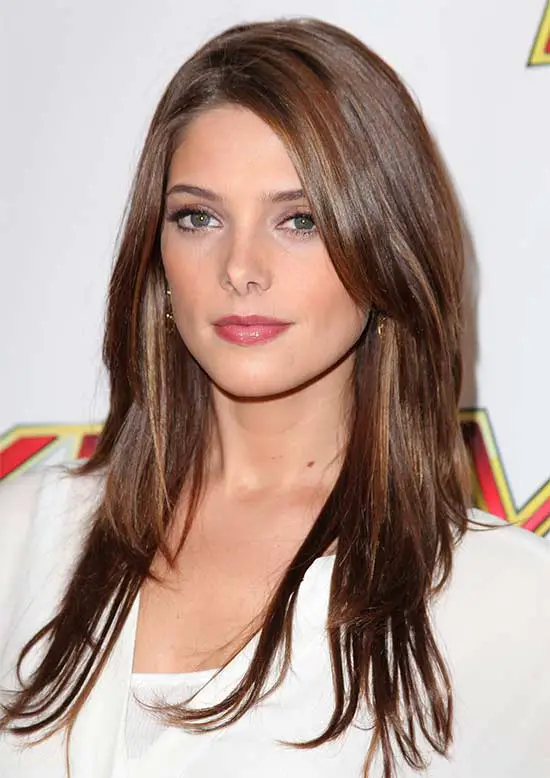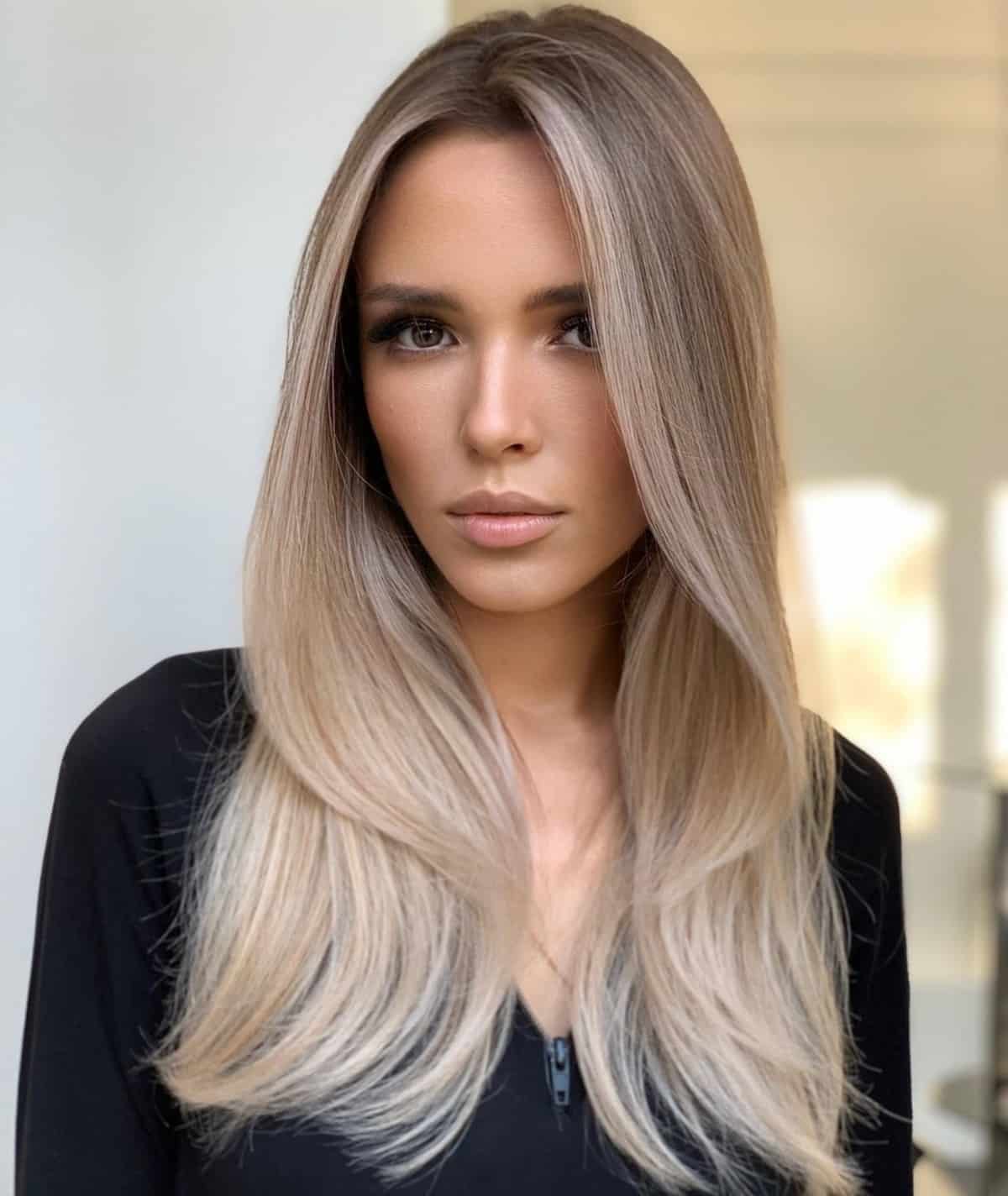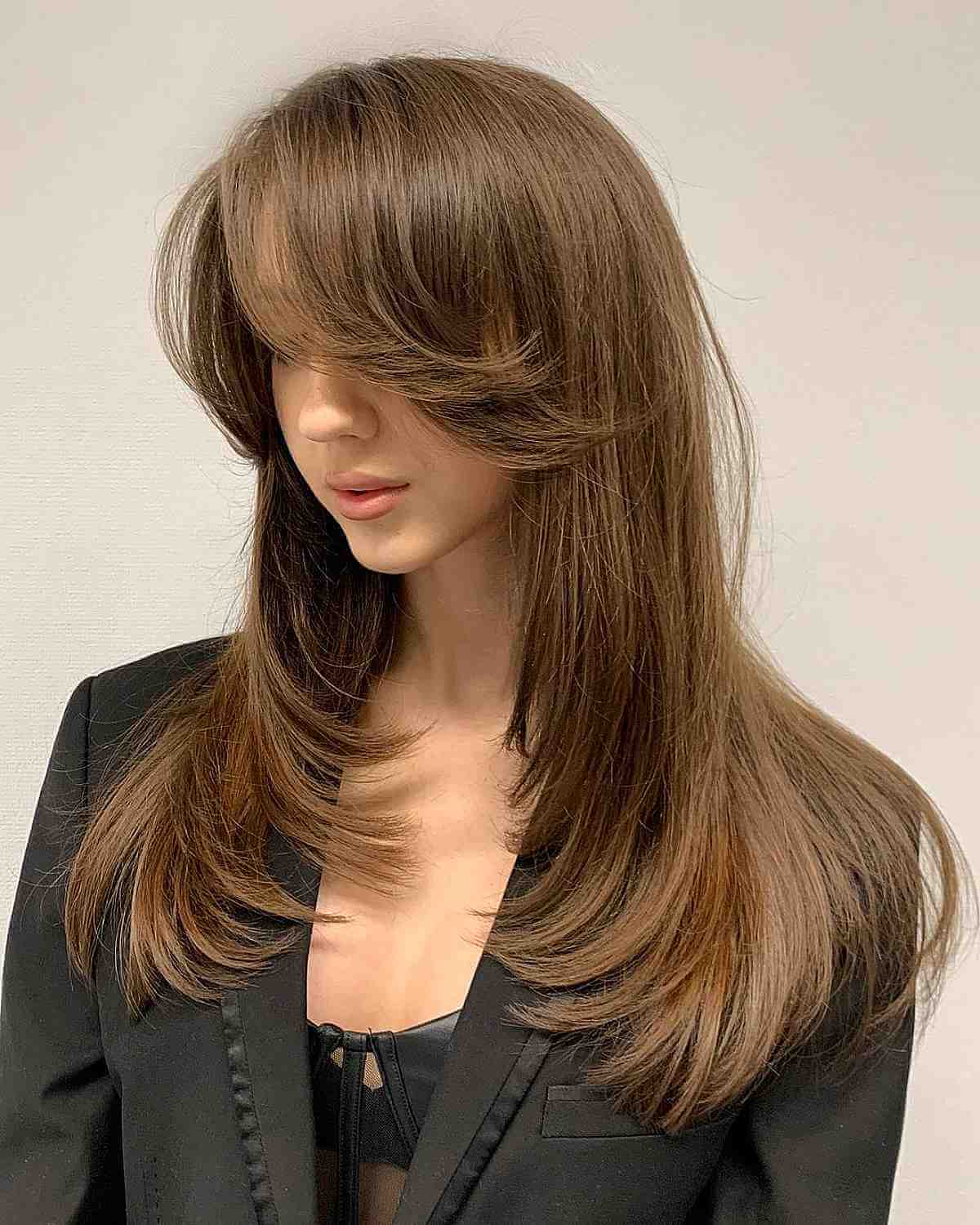Thin Long Hairstyles for Women: Elevating Volume and Sophistication

The pursuit of elegant and voluminous hair often presents unique considerations for individuals possessing fine, lengthy strands. While the intrinsic beauty of elongated, delicate hair is undeniable, its inherent characteristics can pose challenges in achieving styles that exude fullness, body, and sustained hold. This comprehensive guide aims to illuminate the distinctive qualities of such hair types and explore an array of sophisticated styling approaches, cutting techniques, and product selections designed to enhance its natural allure, transforming perceived limitations into opportunities for exquisite hair artistry.
Understanding the specific nature of fine, lengthy hair is paramount to successful styling. Hair characterized by a fine texture typically means individual strands have a smaller diameter compared to medium or coarse hair. When combined with significant length, this can result in a tendency for the hair to lie flat, lack natural bounce, and appear less dense due to fewer hair follicles per square inch on the scalp. Common frustrations include difficulty holding curls, susceptibility to tangling, and a general impression of limpness. However, with the right strategies, these characteristics can be artfully managed to create stunning, voluminous, and long-lasting looks that defy these common preconceptions.
Strategic Approaches to Enhance Fine, Lengthy Hair
Effective management of delicate long tresses begins with a holistic approach encompassing cutting techniques, styling methods, and a carefully curated product regimen. The objective is to introduce dimension, lift, and the illusion of greater density without weighing down the hair or causing damage.
1. Precision Cutting Techniques:
The foundation of any successful style for elongated fine strands lies in a well-executed haircut. The right cut can instantly inject life and body where it might otherwise be lacking.
- Layering: This is a cornerstone technique. Long, sweeping layers, particularly those that begin below the chin or at the shoulders, can create movement and prevent the hair from appearing heavy and flat. Face-framing layers also add softness and a sense of fullness around the face. The key is to avoid excessive short layers near the crown, which can make the top appear thinner and the ends sparse. Instead, internal layering, where shorter sections are hidden beneath longer ones, can remove bulk without sacrificing the appearance of density.
- Blunt Cuts: For individuals whose hair ends appear particularly thin, a blunt cut can be remarkably effective. By cutting the ends straight across, the hair gains a thicker, fuller appearance at the bottom, creating a strong, defined line that conveys density. This technique is often paired with minimal, long layers to maintain movement without compromising the robust baseline.
- Bangs and Fringes: Incorporating bangs or a fringe can dramatically alter the perceived density of the entire style. Whether a full, soft fringe, wispy bangs, or curtain bangs, these additions draw attention to the face, create a focal point, and add a significant amount of hair to the front, contributing to an overall fuller look.
2. Volumizing and Styling Techniques:
Once the hair is expertly cut, specific styling methods can further amplify its natural potential.
- Root Lifting: This is perhaps the most crucial step for adding volume. Applying a root-lifting spray or mousse to damp hair specifically at the scalp before blow-drying can create significant lift.
- Blow-Drying Techniques: Drying the hair upside down or using a round brush to lift sections at the roots while directing airflow upwards can infuse considerable volume. Over-drying should be avoided to prevent frizz and damage.
- Strategic Backcombing (Teasing): When performed gently and sparingly, backcombing at the roots of specific sections can create instant volume and provide a base for updos or half-up styles. A fine-tooth comb and a light touch are essential to prevent damage.
- Large Barrel Curls and Waves: Using large barrel curling irons or hot rollers to create soft, loose waves rather than tight curls adds texture and body without weighing down the hair. The waves create the illusion of movement and fullness.
- Texturizing Sprays and Dry Shampoos: These products are invaluable. Texturizing sprays add grip and volume, making the hair feel thicker, while dry shampoo can absorb oil, provide lift at the roots, and refresh the style between washes.
3. Color Strategies for Enhanced Depth:
Hair color can play a significant role in creating the illusion of volume and dimension.
- Highlights and Lowlights: Strategic placement of lighter (highlights) and darker (lowlights) shades can create depth and movement. The contrast between colors makes the hair appear multi-dimensional and fuller.
- Balayage and Ombre: These techniques, which involve hand-painting color for a soft, graduated effect, can add visual interest and density without a harsh line, contributing to an overall perception of thickness. Lighter tones around the face can also brighten the complexion and draw attention to the hair’s movement.
4. Product Selection and Hair Care:
The right products are vital for maintaining the health and appearance of elongated fine strands.
- Volumizing Shampoos and Conditioners: These formulations are designed to cleanse gently without stripping natural oils and condition without weighing down the hair. They often contain polymers that coat the hair shaft, making it appear thicker.
- Lightweight Styling Products: Avoid heavy creams, oils, and waxes that can flatten delicate hair. Opt for mousses, sprays, and serums specifically formulated for volume and hold without residue.
- Heat Protectants: Essential when using any heat styling tools, these products shield the hair from damage, which is particularly important for fine hair prone to breakage.
- Regular Trims: Even when aiming for maximum length, regular micro-trims (every 8-12 weeks) are crucial to remove split ends. Split ends can travel up the hair shaft, making the ends appear thinner and more fragile.
Popular Styles What Color Is J Los Hair A Comprehensive Analysis Of Her Iconic Tresses for Fine, Lengthy Hair
Several classic and contemporary styles are particularly well-suited for enhancing the beauty of fine, elongated hair:
- Long Layers with Soft Waves: This timeless look provides effortless volume and movement. The layers prevent the hair from appearing flat, while the soft waves add body.
- Blunt Cut with a Middle or Side Part: A sharp, blunt cut creates a strong perimeter, making the hair appear denser at the ends. A deep side part can also add instant lift at the crown.
- Half-Up, Half-Down Styles: These styles are excellent for fine hair as they allow for volume to be created at the crown (through backcombing or root lifting) while keeping some length down.
- Loose, Voluminous Braids: Rather than tight, sleek braids, opting for looser, pulled-apart braids (like a fishtail or a messy French braid) can add texture and the illusion of thickness.
- High Ponytails and Textured Updos: By creating volume at the roots and incorporating texture, a high ponytail can look bouncy and full. Similarly, a loose, messy bun or chignon can appear voluminous and sophisticated.
- Fringe with Length: A well-cut fringe, whether full or wispy, can make the overall style appear denser and draws attention to the eyes.
FAQs by Thin Long Hairstyles for Women
Q: What is the most effective cut for adding volume to fine, lengthy hair?
A: Strategic layering, particularly long, face-framing layers, is often recommended. A blunt cut at the ends can also create the illusion of density by providing a strong, full baseline.
Q: Can fine, lengthy hair be styled into updos without appearing sparse?
A: Yes, by incorporating backcombing at the crown, utilizing hair accessories, and opting for loose, textured updos rather than sleek, tight styles. Pre-curling the hair can also add bulk and grip for updos.
Q: Are heat tools detrimental to fine, lengthy hair?
A: Excessive heat can cause damage, leading to breakage and thinning. When heat tools Types Of Tied Up Hairstyles A Comprehensive Exploration are used, it is imperative to apply a heat protectant and select lower temperature settings suitable for delicate hair. Air-drying partially before blow-drying can also minimize heat exposure.
Q: What product categories are most beneficial for enhancing volume in fine, lengthy hair?
A: Volumizing mousses, root lifting sprays, and dry shampoos are excellent for adding body and texture. Texturizing sprays can also provide grip and fullness without weighing down the hair.
Q: How frequently should fine, lengthy hair be trimmed?
A: Regular trims every 8-12 weeks are advisable to remove split ends and maintain healthy growth. Healthy ends contribute to a fuller appearance and prevent breakage that can make the hair look thinner.
Tips by Thin Long Hairstyles for Women
- Gentle Handling: Minimize pulling, aggressive brushing, and tight hairstyles to prevent breakage and stress on delicate strands. A wide-tooth comb should be used on wet hair.
- Strategic Product Application: Focus volumizing products at the roots and lightweight conditioners primarily on the ends, avoiding the scalp to prevent weighing down the hair.
- Cold Rinse: A final rinse with cool water can help seal the hair cuticle, enhancing shine and smoothness, and can contribute to a healthier overall appearance.
- Avoid Over-Conditioning: Heavy or excessive conditioner can weigh down fine hair, counteracting efforts to add volume. Apply sparingly and rinse thoroughly.
- Regular Scalp Care: A healthy scalp promotes stronger hair growth. Consider gentle scalp massages or clarifying treatments if product buildup is a concern.
- Mindful Sleep: Using silk or satin pillowcases can reduce friction and tangling during sleep, preventing damage to delicate hair.
- Dietary Considerations: A balanced diet rich in proteins, vitamins, and minerals supports overall hair health and strength from within, which is crucial for maintaining the integrity of long, fine hair.
Conclusion by Thin Long Hairstyles for Women
The perception that fine, lengthy hair is inherently challenging to style for volume and impact is a misconception that can be dispelled with informed choices and expert techniques. By understanding the unique characteristics of this hair type, embracing strategic cutting methods, utilizing targeted styling approaches, and committing to a beneficial hair care regimen, individuals can unlock the full potential of their delicate long tresses. The journey involves not just achieving temporary volume but cultivating sustained health and vitality, resulting in styles that are not only fuller and more dynamic but also radiate an undeniable elegance and sophistication. Embracing these principles transforms the experience of managing long hair with fine texture into an opportunity for diverse and beautiful self-expression, proving that such hair is a canvas for truly exquisite beauty.







More suggestion: Naturals Unisex Hair And Style Salon A Comprehensive Overview Of Holistic Hair Care And Inclusive Styling